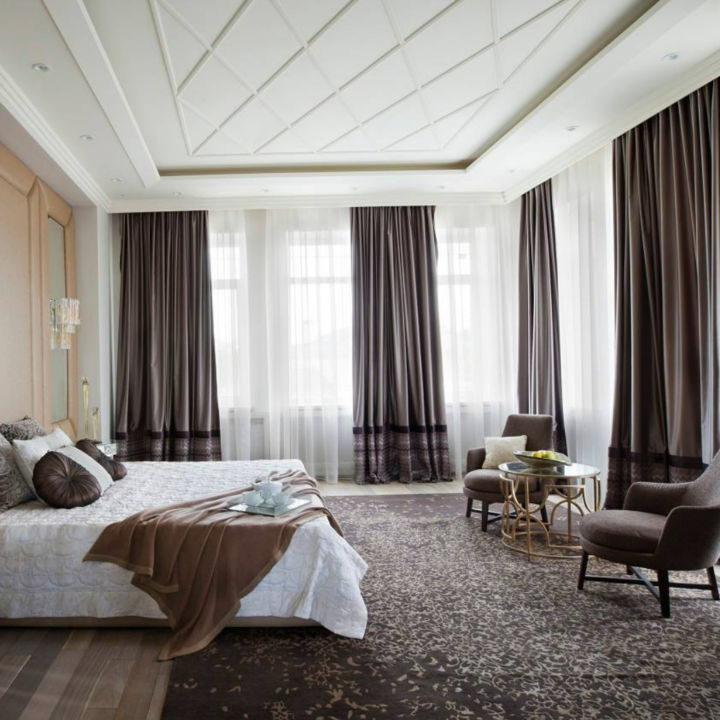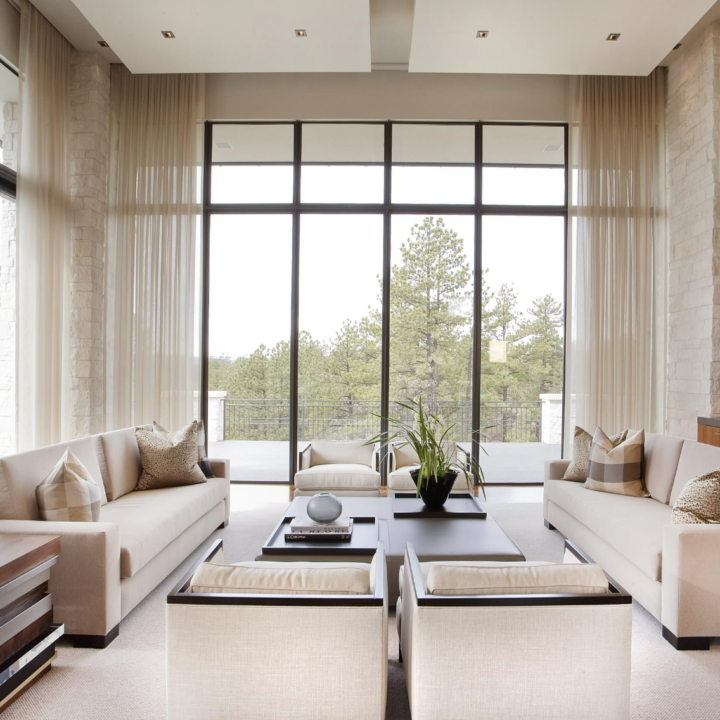Spiffy Speak
Floor to Ceiling Curtains: A Complete Guide
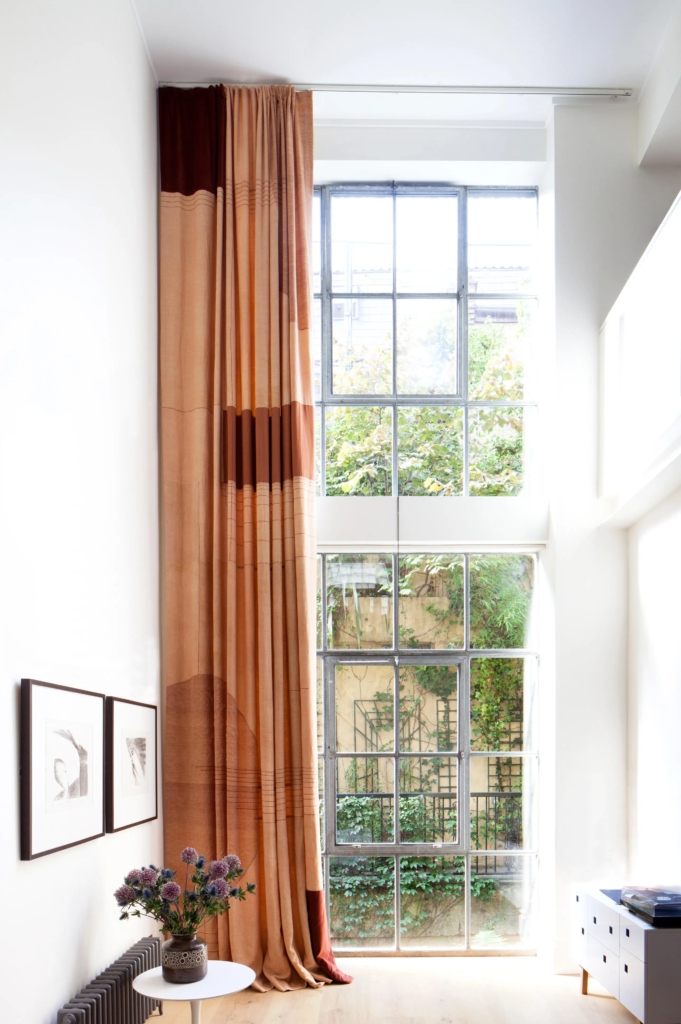
Are you considering floor-to-ceiling curtains to revamp your space? Well, we can’t agree more to the fact that when it comes to drapery, truly “more is more”!
Afterall – in a world full of little black dresses – it’s still the decadent sweeping Gabbanas that light the Met Gala.
Curtains take a large amount of visual space and done right, they can elevate a window from prosaic to panache. To add to their natural potential and make your custom drapes look wow, give some precious thought to the details, and oh – length is definitely part of that. And floor-to-ceiling drapes do more than just serve as instruments of light control and privacy. These tall graceful furnishings usher in the glamor and drama of a sweeping Gabbana right into your room.
Why Floor to Ceiling Curtains?
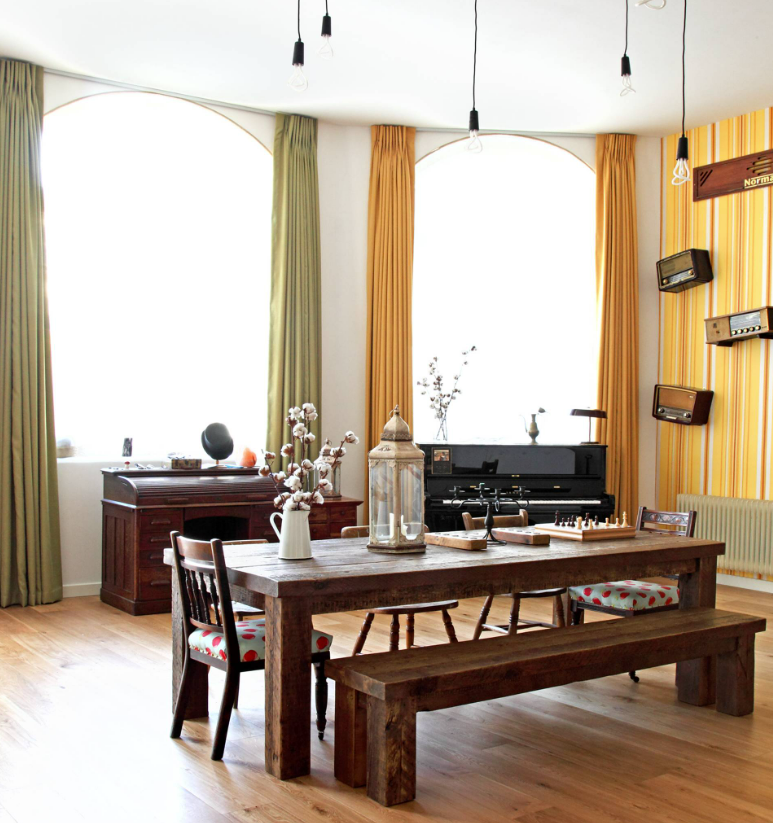
Full length drapes add drama and depth to the interiors. In homes designed on modern and Scandinavian concepts, where open spaces, large windows and lighting are key elements, floor-to-ceiling drapes slay the look. While sill-length curtains can read outdated these days (unless used in kitchens or bathrooms), sleek and stylish floor-to-ceiling curtains are perfectly befitting in a contemporary aesthetic. Hung across the entire width of a room, a set of bold-patterned, full-length drapery is a statement piece in itself, no different from a carefully considered accent wall.
No doubt, the biggest reason we are such passionate fans of this statuesque sizing is its pure grace and elegance. But full size drapes offer more than that. They merge form into function, make a low ceiling look high, cover up architectural flaws, emphasize the salient design features, while meeting the essential mandate of light and privacy control. Here’s how:
- ELONGATE YOUR ROOM OPTICALLY: In case you have low ceilings and can do nothing to change the situation, floor-to-ceiling custom drapes can create an illusion of height by drawing the eye upwards. Employing this one element to emphasize the vertical space in the room instantly evokes a sense of expanse and openness. Consider hanging a full length, vertical striped drape on a low-profile track directly onto the ceiling. Letting the striped curtains fall from the highest point in the room serves as a subtle guide to the eye to grasp the full vertical space. It elongates the space visually, while playing down the feeling of being cramped in a low ceiling room.
- COVER UP THOSE DESIGN FLAWS: Clients often struggle to dress up windows of different sizes in the same room. Curtains or shades of various lengths to accommodate these only emphasize this rather inconvenient flaw, drawing further attention to inconsistent sizes. Full length curtains, however, by virtue of being the same length – bring a sense of optical uniformity to disjointed windows. Similarly, some windows sit at an awkward height, either just a foot or two from ceiling and/or similarly awkward distance from floor. Again, floor length curtains serve to de-emphasize these obvious architectural faux pas, tricking the eye into ignoring the awkward placement of windows.
- THROW SPOTLIGHT ON UNCONVENTIONAL WINDOWS: Arched windows are both a dreamer’s delight and the dresser’s nightmare. Hardware for arches is not only more expensive, but also typically only serves an aesthetic purpose accommodating just stationary drapes. Floor-to-ceiling curtains, however, allow for unfettered function while living up to the aesthetic appeal of these arched architectural elements.
- ENSURE PERFECT INSULATION: If you need total insulation from light to be able to catch some sleep during daytime hours, blackout floor-to-ceiling curtains are highly recommended as they’re uniquely equipped to prevent light leaks through top and bottom edges of the panels. Also, for sleeping well through an extra cold night, they will provide better insulation than a window-sized curtain.
Furthermore, because full-sized windows are notorious warmth stealers in winter, having them covered from all sides will save you some sleep shivers. Similarly, if wall-sized glass windows or sliding glass doors overlooking your patio offer you a covetable sun-kissed living room but leave you begging for respite from the heat and the glare, ceiling-to-floor lined drapery can save the day.
Picking the Right Length for Floor-to-Ceiling Drapes
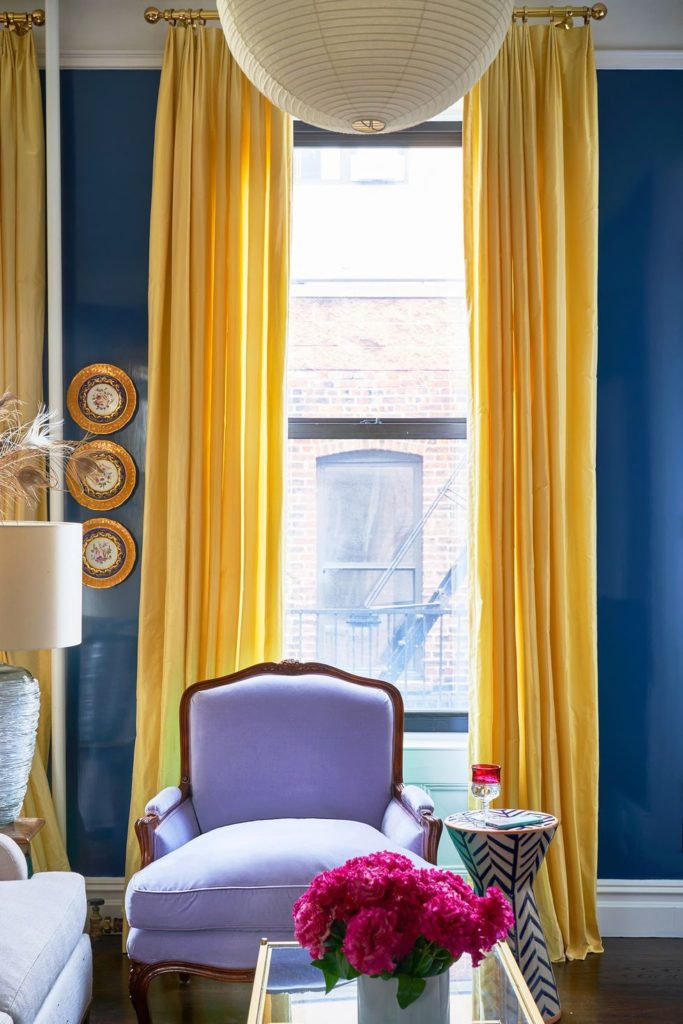
By the sheer fact that you choose to let your drapes cover the entire vertical space, a question arises on how close the drapery bottom should sit on the floor. Well, there are three key looks worth considering: the float, the kiss and the puddle.
- FLOAT: This finish has some ready benefits because the curtains clear about half to an inch off the floor. The length is an especially practical choice for rooms that collect floor dust easily. Floating curtains also tend to need less manual dressing and pleat setting, as compared to kissing or puddling drapery, for a neat look. The upkeep is relatively easier too since they don’t drag on the floor and are therefore recommended for spaces where curtains will be opened and closed often.
- KISS: You achieve this look by taking exact ceiling-to-floor measures. The curtains lightly graze the floor as if rending a gentle kiss. They are suitable for semi-formal spaces and impart an elegant touch without being too formal. For formal spaces, many clients and designers prefer a variation of this look, adding just an inch of extra length (called a ‘break’) so the pleats fold and sit ever so primly on the floor.
- PUDDLE: These curtains have 4 to 18 inches more length than kiss-length which allows the fabric to pool on the floor. The pleats formed thus are amazingly opulent and stylish. Suited especially for velvets and silk drapes, this is the dream look for floor-to-ceiling drapes because of its highly dramatic appeal and suitability for formal spaces. For further expert guidance, read our Puddled Curtains Guide.
Do’s and Don’ts
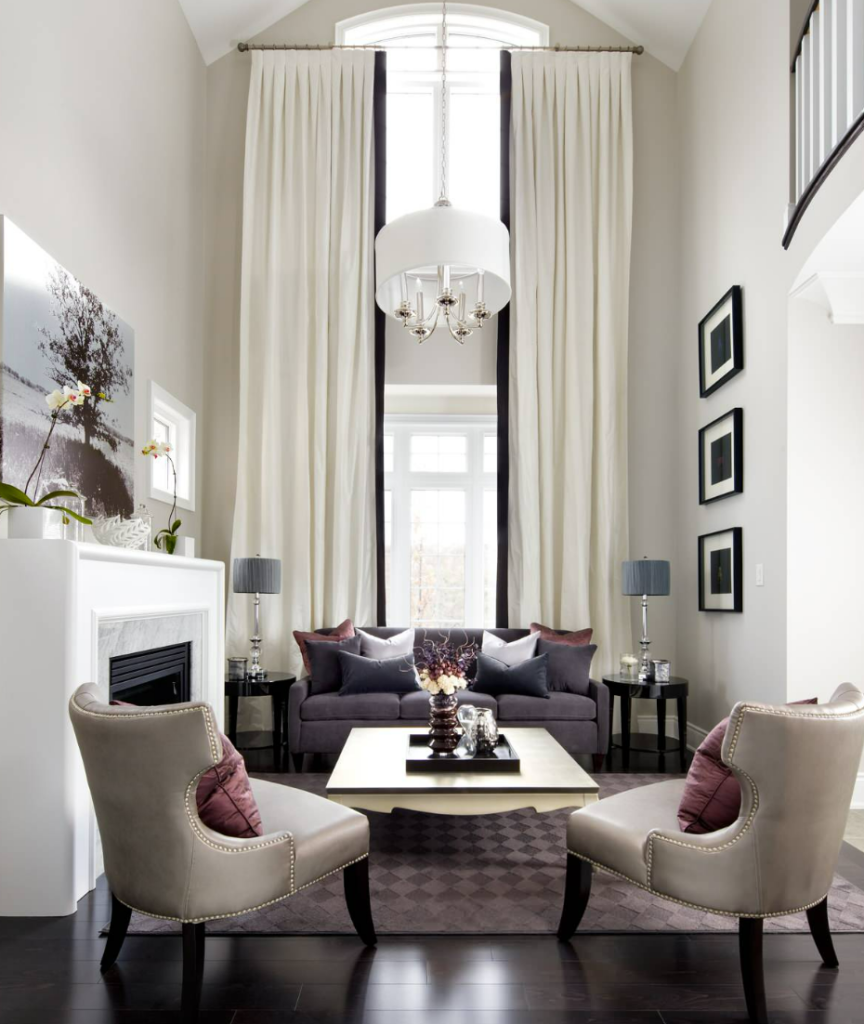
To not keep you from your shopping spree any further, below are a few handy tips to bear in mind when considering floor to ceiling curtains. Hope they help!
- HEADING STYLE: If the ceiling is more than 8 feet high and drapery will be closed and opened regularly, ease of movement may be challenged owing to the excessive length and weight of the drapery. Although all drapery heading styles suit well aesthetically for floor-to-ceiling curtains, if you want to achieve functional ease, we advise avoiding heading styles like tab tops, back tabs or rod pockets because fabric loops and pockets are not easy to glide on poles. Instead, opt for styles like grommet tops or any of pinch pleats that glide effortlessly on grommets and rings.
- HARDWARE: The hardware should be sturdy enough to manage the weight of the fabric, especially where ceilings are too high. If you’re installing tracks, do consider mounting directly onto the ceiling for a seamless top-to-bottom flow. Chosen wisely; your hardware and curtains can be a part of the architecture itself, a perfect blend of art and engineering. Don’t miss the opportunity! For instance, if you’re decorating your log cabin, wood curtain rods would match the look of the rustic cabin curtains, whereas in a modern farmhouse, sleek black metallic curtain rods would be a perfect fit.
- HEATERS: If a heater is placed right below the window, full length curtains may not be the safest, most practical choice as they’ll block the heat generated by the radiator/heater. If you’re keen on full length drapes for aesthetic purposes – and we wholeheartedly share the passion of course – we recommend using them only to frame your windows and adding roman shades for function.
- WINDOW PLACEMENT: If your windows are just a foot or so short of touching the ceiling, hanging curtains from the top of the window is certainly going to make the gap look awkward. So we recommend mounting the hardware as close to the ceiling as possible and draping from ceiling to floor, so the space effortlessly becomes a sweeping delight.
- KITCHEN & BATH: Between the need for safety from fire, saucy spills and saute splashes, it’s easy to see why full length curtains may not be the best choice for kitchens. For baths, we recommend cafe curtains or roman shades to save the bottom from getting frequently wet from splashes.
Overall, apart from a few exceptional cases, floor-to-ceiling look is the ideal window treatment for most homes. Your windows deserve to be dressed up elegantly because nothing less looks right. Think of them as the eyes of your house, and cash in on every bit that you stand to gain by simply choosing to go floor-to-ceiling for your drapes. You’ll never ever regret it if you follow our guide, that’s a Spiffy guarantee.
ALSO READ: BEDROOM CURTAIN IDEAS FOR YOUR PERFECT ROOM

